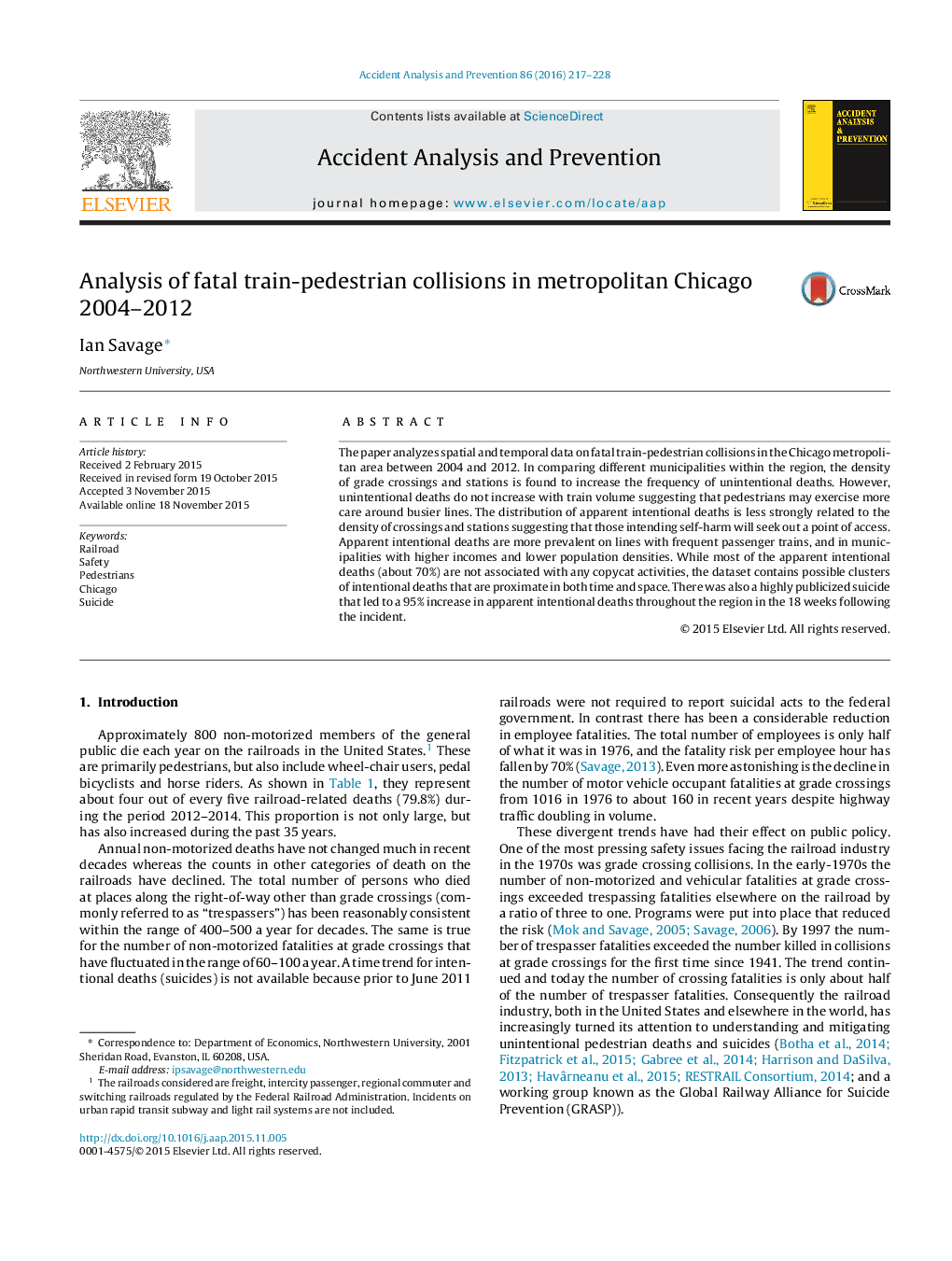| Article ID | Journal | Published Year | Pages | File Type |
|---|---|---|---|---|
| 6965435 | Accident Analysis & Prevention | 2016 | 12 Pages |
Abstract
The paper analyzes spatial and temporal data on fatal train-pedestrian collisions in the Chicago metropolitan area between 2004 and 2012. In comparing different municipalities within the region, the density of grade crossings and stations is found to increase the frequency of unintentional deaths. However, unintentional deaths do not increase with train volume suggesting that pedestrians may exercise more care around busier lines. The distribution of apparent intentional deaths is less strongly related to the density of crossings and stations suggesting that those intending self-harm will seek out a point of access. Apparent intentional deaths are more prevalent on lines with frequent passenger trains, and in municipalities with higher incomes and lower population densities. While most of the apparent intentional deaths (about 70%) are not associated with any copycat activities, the dataset contains possible clusters of intentional deaths that are proximate in both time and space. There was also a highly publicized suicide that led to a 95% increase in apparent intentional deaths throughout the region in the 18 weeks following the incident.
Related Topics
Physical Sciences and Engineering
Chemical Engineering
Chemical Health and Safety
Authors
Ian Savage,
